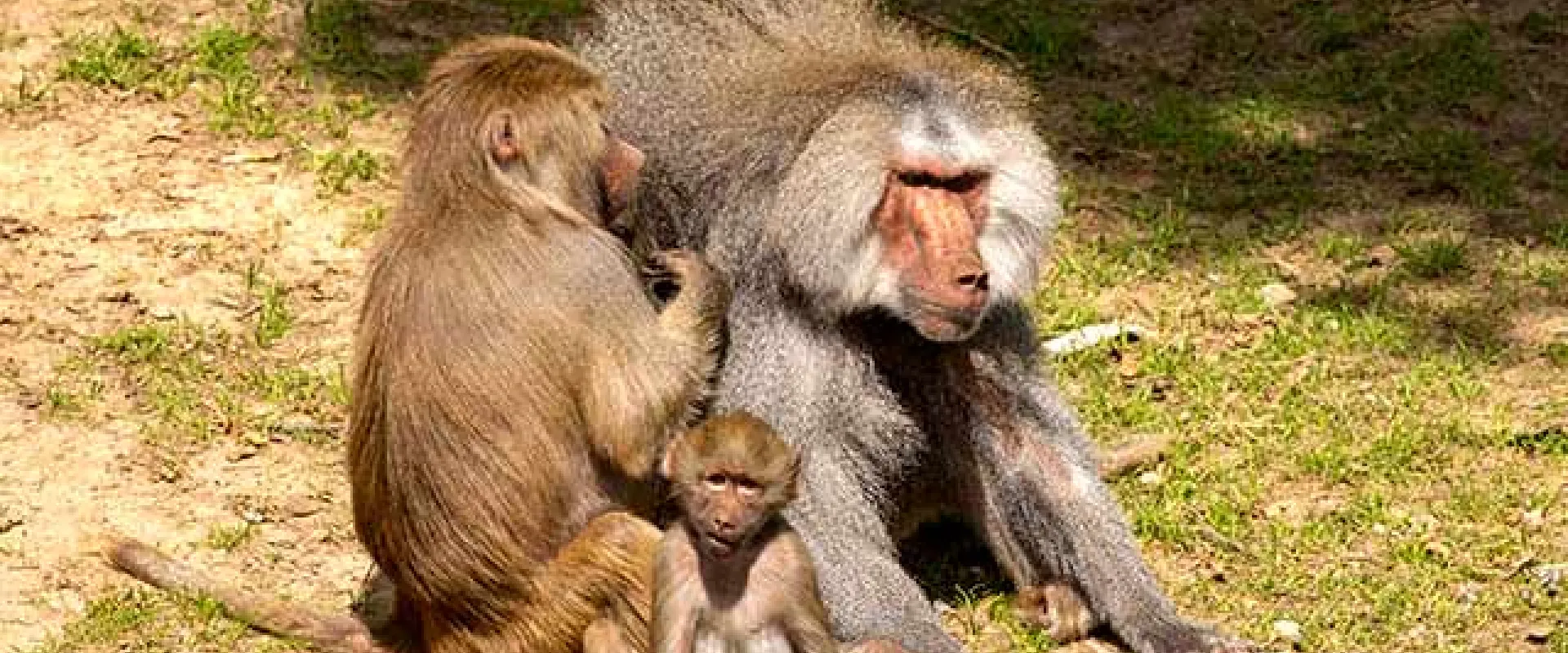The North Carolina Zoo held the grand reopening of the long-awaited, renovated baboon habitat on Tuesday, May 23. The baboon "band" (a group of baboons) has been living behind-the-scenes on zoo grounds during the renovation and additions to their habitat, which began in 2021.
One of the most popular attractions, the hamadryas baboon species, has been at the Zoo for 45 years. The Zoo's band of 22 baboons ranging in age from senior adults to infants, is the largest in the United States (tied with San Diego Zoo).
Renovations
The total price tag for the new Baboon habitat construction was $5.2 million, funded by the voter-approved N.C. Connect Bond in 2016.
Additional spaces in the renovated habitat will soon open, including a new 4,000-square-foot dayroom and indoor quarters with viewing areas that will make the baboons regularly visible to guests. This unique configuration provides baboons with spacious areas designed to mimic habitats in the wild, including 40-foot vertical climbing and play area.
Fun fact: The new dayroom is fashioned to emulate Ethiopia Lalibela architecture from the 13th century, specifically to honor baboons' roots. Hamadryas baboons are native to the Ethiopian highlands in the northeastern region of Africa.
“A key part of our mission is to improve the quality of life in North Carolina by sharing and preserving our natural world, which stimulates learning, encourages recreation and conservation, and promotes economic development,” said DNCR Secretary Reid Wilson. “Each time we improve or expand the offerings at the N.C. Zoo, we are also expanding opportunities for conservation education and for families to have fun together.”
“We are grateful for the consistent support from the state and people of North Carolina who truly made this renovated habitat possible with the N.C. Connect Bond,” said Director and CEO Pat Simmons of the North Carolina Zoo. “Tourism is the second largest industry in the state; we look forward to bringing even more to our state with further expansion.”
About hamadryas baboons
In hamadryas baboon society, large troops form when baboons gather together at sleeping spots for better protection at night. As the troop leaves a sleeping site, it breaks down into smaller groups called bands that break apart from the troop to forage and travel together. Most social interactions happen within bands.
Hamadryas baboons are large-bodied monkeys with muscular build. Male hamadryas baboons have a distinctive mantle (mane) of long silvery hair, bright pink face, and backside while females have light brown fur.
Hamadryas baboons can live up to 20 years in the wild and up to 31 years under human care. Males weigh 40-45 pounds, and females 20- 25 pounds.
Hamadryas baboons exist in stable populations and are listed as a species of Least Concern on the IUCN Red List of Threatened Species.
###
About the North Carolina Zoo
At the North Carolina Zoo, we celebrate nature. As the world's largest natural habitat Zoo, we inspire a lifelong curiosity about animals in the hundreds of thousands of people who visit our Zoo each year. Our dedicated team of experts provides exceptional, compassionate care for the more than 1,700 animals and 52,000 plants that call our Park home. We also lead efforts locally and globally to protect wildlife and wild places because we believe nature's diversity is critical for our collective future. The North Carolina Zoo invites all of our guests to witness the majesty of the wild in the heart of North Carolina and welcomes everyone to join in our mission to protect nature's diversity. Visit NCZoo.org to begin your life-changing journey.
About the North Carolina Department of Natural and Cultural Resources
The N.C. Department of Natural and Cultural Resources (DNCR) manages, promotes, and enhances the things that people love about North Carolina – its diverse arts and culture, rich history, and spectacular natural areas. Through its programs, the department enhances education, stimulates economic development, improves public health, expands accessibility, and strengthens community resiliency.
The department manages over 100 locations across the state, including 27 historic sites, seven history museums, two art museums, five science museums, four aquariums, 35 state parks, four recreation areas, dozens of state trails and natural areas, the N.C. Zoo, the N.C. Symphony, the State Library, the State Archives, the N.C. Arts Council, the African American Heritage Commission, the American Indian Heritage Commission, the State Historic Preservation Office, the Office of State Archaeology, the Highway Historical Markers program, the N.C. Land and Water Fund, and the Natural Heritage Program. For more information, please visit www.ncdcr.gov.
